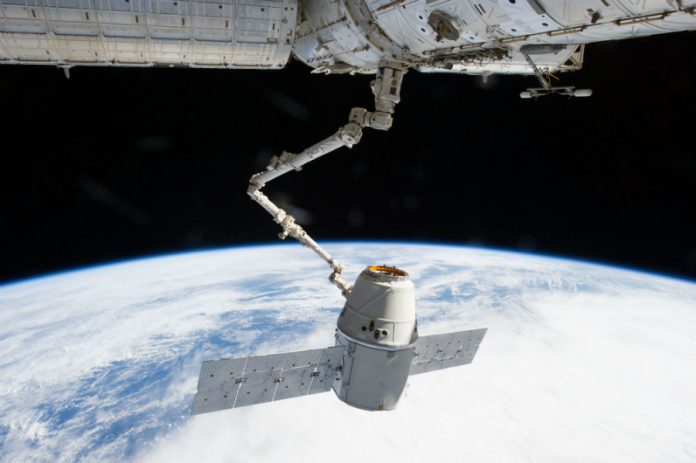
SpaceX is the only private company ever to return a spacecraft from low-Earth orbit. It’s also the only private company to send a spacecraft and exchange cargo payloads with the International Space Station (ISS), a feat previously accomplished only by few governments.
The SpaceX team had a successful mission today, and they just recovered a booster from today’s launch. Their spacecraft known as Dragon is also bringing docking adapters to the ISS to ease future SpaceX’s manned missions.
Today’s mission not only sent crew supplies and science hardware to the ISS, but they also carried microbes from Chernobyl. These bacteria were found at the Exclusion Zone at Chernobyl and two distinct species were sent. The Cladosporium sphaerospermum and C. clad sporicides due to their radioactive properties.
Some scientists hope these microbes will help to find new ways to fight radiation. The fungi have many tactics to soak up and mitigate the radiation they receive which include producing lots of melanin.
Astronauts experience high levels of radiation while they are in space, this radiation is not as high as it is in Chernobyl’s exclusion zone, though. Clay Wang expects that exposing these fungi to radiation levels in space will compel them to use their repertoire of radiation compensation tricks.
On the other hand, NASA also sent equipment to be tested in space on the science payload. A machine for testing whether we can sequence DNA on microgravity was sent on the latest payload. NASA doesn’t think it will be impossible, but sequencing DNA only requires an electrical current, but this process also relies on Earth’s natural gravity.
More pics of last night's Falcon 9 & Dragon launch to @Space_Station & first-stage landing → https://t.co/vn4S8bV3x3 pic.twitter.com/7lYAgFR9JZ
— SpaceX (@SpaceX) July 18, 2016
How to make a breakthrough?
To sequence DNA in space scientists will need to come up with a new method. Nasa also sent on the science payload equipment to test and experiment called OsteoOmics that looks at which genes are transcribed in bone that’s been kept in mag-lev weightlessness on Earth versus bone cells maintained in freefall weightlessness, which is what occurs aboard the ISS.
Lastly, NASA sent up a phase-change heat exchanger which is currently in alpha testing. This heat exchanger could make heating and cool much easier in space using thermal inertia. It will also compare water and wax to see which one works better. Wax is currently being used on smartphones and technological platforms technologies due to its overclocking potential and thermal properties.
“From an overall perspective, this is just part of the rich stream of research going on on the space station, from human research, biology, physical sciences investigations and things for exploration technology,” said Julie Robinson, chief ISS program scientist, during a briefing Saturday.
Now, under a $1.6 billion contract with NASA, SpaceX will fly numerous cargo resupply missions to the ISS. And shortly, SpaceX will carry crew as well.
Their spacecraft Dragon was originally designed to carry astronauts to space, and now under a $440 million agreement with NASA, they are making modifications to Dragon to be able to take prospective crews on future missions.
The company has over 70 successful launches on its manifest which represents about 10$ billion in contracts, and they are currently developing the Falcon Heavy, which they want it to be the most powerful rocket on Earth.
Finally, SpaceX keeps working on one of their key goals, to develop reusable rockets, a feat that would transform space exploration by reducing the vehicle costs dramatically.
#AstroKate describes the exciting #DNA research capabilities aboard @Space_Station: https://t.co/1wwMUAc9YW
— NASA Science (@NASAScience_) July 19, 2016
Source: Extreme Tech










